Roboadvisors and automated investment platforms are also particularly vulnerable targets for scammers and identity thieves, who can exploit their systems to carry out fraudulent activities and steal sensitive information.
The advantages of relying on a proper document verification solution

Identity documents, used for verifying our identity and accessing services, have been an essential part of our daily lives for decades.
T
echnology has evolved to allow digital analysis of official documents that certify “who we are,” simplifying the identity verification process and improving security. Companies and organizations benefit from these solutions, as they can quickly verify the identity of a potential user in a 100% digital process that saves time and resources.
According to a report published in January 2023 by Marketsandmarkets, the digital identity market will grow exponentially in the coming years, reaching a value of $18.6 billion in 2027. Document verification will undoubtedly be at the center, as a trend that must understand how it is affected by the rise of the remote work culture, with companies of various sizes that need to satisfy customer and employee identity verification processes, as well as global digital identification plans such as ID cards in Europe and India.
Overall, identity document verification technology has had a major impact on the way we interact with the digital world. The strategies for this type of verification are based on cross-referencing images captured in real time with official documents, making it possible to distinguish between legitimate customers and fake profiles. Addressing this type of verification from a reliable platform is critical to the success of digital transactions.
Machine learning to support document verification
Machine learning (ML) has brought accuracy and security to all verification processes. As a discipline of Artificial Intelligence that registers patterns and perfects its performance operation after operation, it is highly valuable when it comes to analyzing identity documents. A document verification solution can leverage machine learning for different tasks: from classifying different types of documents, such as passports, driver’s licenses or ID cards, and detecting the forgery of a signature or the alteration of a document, to verifying the authenticity of a document by comparing it with a database or extracting specific data for specific purposes.
Integration is key
Solutions for identity document verification should be integrated into a single platform, preventing the problems of isolated, obsolete or inherited technologies. As a fundamental part of a powerful identification scheme, document verification should work hand in hand with other solutions, such as access management or risk assessment. Technology that only an engineer can understand should be discarded for those that can be modified from a single place and in the most intuitive way possible.
Agile and also scalable authentication systems
Implementing document verification solutions was traditionally a difficult task, due to having to work with complex codes and play with different factors such as image recognition. A digital identity strategy that is capable of activating this option from a plug and play perspective will relieve development teams of minor tasks and make it easier to adapt as the size and needs of the company change.
Understanding the investment effort
It is obvious that companies must carefully consider which provider is the most cost-effective for them. Choosing a document verification solution that doesn’t include biometric analysis, imaging, life testing or valuable back-office services, can lead to poor results as well as forcing the company to use other providers. Short-term savings can be disastrous without proper planning, especially because these solutions are an extremely practical anti-fraud resource that will prevent losses in the future.
Security is everything
It is of little use for a company to rely on certain technologies to fight crime if the technology itself is not shielded at the highest level against fraud. Companies must therefore rely on dependable suppliers capable of handling any situation without losing any data or sensitive information. Lack of knowledge or contracting an unprepared supplier can have very negative consequences. A very high percentage of fraud occurs during the document verification process, and cybercriminals are always on the lookout for new methods, such as deepfakes, to circumvent detection technologies, no matter how advanced they may be.
The verification of identity documents must be positioned at the core of a well-rounded strategy and remain alert to changes. What until recently seemed only the domain of large financial companies is now fundamental for a wide range of different activities, from car-sharing to courier services. All sectors are therefore in need of reliable solutions of this type, providing effective and positive onboarding for their customers.

























